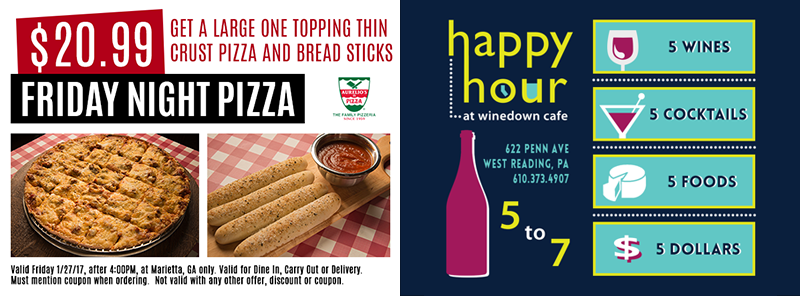Color plays a major role in business. After all, marketing is an art of persuasion. Savvy marketers can drive action by combining the power of color with motion, sound, texture, smell and other sensory elements. Its impact is so pronounced that research shows colors can have a dramatic impact on marketing results:
- Color ads attract 42 percent more attention than those in black and white.1
- Prospects hold on to colored business cards 10 times longer than standard white ones.2
- Ninety-three percent of buyers focus on a product’s visual appearance when making purchasing decisions.3
Different people perceive colors differently.
Before jumping into how to use color theory to improve your marketing results, we need to discuss color perception at the individual level. Color theory has spurred such an enduring — and, at times, controversial — debate, since individuals’ experiences of color depend on taste and even personal history. Culture, location, sex, gender and other environmental factors all play a role.
That said, some studies have found patterns in how Americans perceive color. Research from both Joe Hallock and Scott Design found that, by far, both men and women favor blue. Green is also popular, and purple is a strong runner-up for women. Brown, yellow and orange are the most disliked colors, but men are more likely than women to dislike purple.
Hallock’s survey also found that women prefer softer colors and tints (colors mixed with white), whereas men prefer brighter colors and shades (colors mixed with black).
It’s not such a surprise, then, that companies jump on the sex-specific bandwagon of pink everything for girls. However, pink hasn’t always been associated with femininity, and more parents and brands are pushing back against the stereotype. Risk-takers are often rewarded for breaking these “rules,” so we encourage you not to be too rigid in adhering to color associations.
Understand how color affects consumer psychology.
A quick Google search on color theory will bombard you with splashy infographics. Down the rabbit hole you’ll go, analyzing what these sources say the color of your logo means. If you want to be seen as secure, use gray or blue. Think you’re classy? Go with black or silver. Restaurants had best use red to stimulate appetites.
You’ll see that purple communicates luxury, for example. But, wait … isn’t Taco Bell’s logo is purple?
So, do these sometimes-contradictory connotations mean color theory is a waste of time? No, actually. While color perceptions are too dependent on personal experience to be universally translated as specific emotions, broader patterns can be found.
Instead of shoehorning your brand into some stereotypical box, the key, then, is to use color as a supporting element for your overall message. Social psychologist and Stanford professor Jennifer Aaker studied this idea of brand personality, and she identified five dimensions: sincerity, excitement, competence, sophistication and ruggedness.
Do people buy Levi’s jeans because their logo is red — or because Levi’s is positioned to be seen as rugged? The reds, blues, blacks and grays used by Levi’s are appropriate for their tough and outdoorsy persona, even though brown is considered the color to use to suggest the outdoors. Similarly, Timberland, Jeep, Ford and Harley-Davidson all evoke ruggedness without making their logos, websites and advertising brown.
In short, it’s knowing your audience that’s the essential foundation of a strong brand.
Find your own color palette for increased website conversions.
As you consider color associations for your brand and build out your marketing collateral, remember:
- Choose colors that fit you desired associations. Just as people eat with their eyes, they judge your brand by your look as well. Up to 90 percent of consumers’ initial judgement of a product is based on color alone.4
- Keep your color palette consistent. Your direct competitors aren’t the only ones vying for your customers’ attention. Consumers are blasted with advertising day in and day out — so, how do you intend to make a lasting impression amid the noise? Consistency, as it turns out, is key: Eighty percent of consumers believe color increases brand recognition.5
An important addendum is learning to use contrast effectively. The von Restorff effect, or the isolation effect, states that, when presented with a group of items, it’s the one that stands out from the rest that people remember. Designers can easily incorporate this phenomenon using pops of color to draw your eye to forms, buttons or other calls-to-action.
Have you heard the debate over whether to use a green, red or orange “Add to Cart” button on your sales pages? Conversion rate optimization specialists realize that it’s not that you should always use red buttons because red buttons always work better. It’s about which button provides a stark visual contrast with the rest of the page.
Take a page from the following brands that use a highly contrasting accent color:
- Amazon’s yellow-orange buttons stand out amid the various gray-blue shades of the rest of the palette.
- To contrast with their white and medium blue, Domino’s adds a pop of bright red for their CTAs.
- Netflix breaks up its cream and gray-brown neutrals with a classic red.
Incorporate color theory into your social media strategy too.
Your website isn’t the only place you want to encourage your customers (or prospects) to take action. In creating content for Facebook, Instagram, Twitter or any other platform, your goal should be to hit the right person with the right message at the right time — so that they then click, like, share or buy.
As mentioned above, though, users’ feeds are full of other businesses competing for their attention. They scroll through post after post, often absentmindedly, giving you just a fraction of a second to stand out. Digital marketers now even have a term for posts that stop users in their tracks: thumb-stopping content.
How do you create such effective content? Start with strong, straightforward messaging and use color and composition to lead users to the most important information. The more visual the platform (e.g., Pinterest), the more your color choices matter.
Test your color choices — along with everything else.
The good news? Digital content is simple, fast and cheap to test. You don’t need to wait months to see whether your brochures compel prospects to call you, and you don’t have to spend thousands of dollars to revamp a billboard to test a new font color for your CTA.
Simply run a split test to compare the performance of landing page images or buttons. Online, the evaluation period shrinks from months to weeks (and even hours in some cases).
So, tell us in the comments about your latest split test. What has worked for you, and how have you used this data to strengthen your brand and your marketing results?
1. Ray, Mitt. “How to Use Colours in Your Visual Social Media Strategy [Infographic].” Social Marketing Writing. 3 April 2014. http://bit.ly/2vmWggH.↩
2. Fan, Henry. “8 Business Card Statistics to Give Your Strategy Direction [Infographic].” Silkcards. 10 Feb. 2017. http://bit.ly/2vmWlRg.↩
3. Zeevi, Daniel. “The Psychology of Color in Marketing.” DashBurst. 31 July 2013. http://bit.ly/2vmCQIF.↩
4. Singh, Satyendra. “Impact of color on marketing.” Management Decision, Vol. 44 Issue: 6, pp.783-789. 2006. http://bit.ly/2vmY8WL.↩
5. Morton, Jill. “Why Color Matters.” Color Com. 2010. http://bit.ly/2vmr54T.↩
















